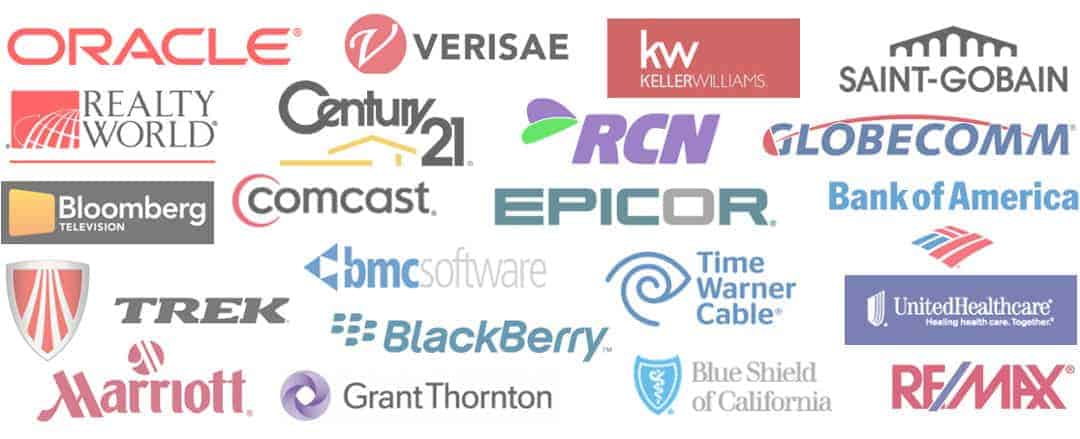
Business Speaker on Business Networking
Patrick Schwerdtfeger is a motivational keynote speaker whose topics include developing an effective elevator pitch and business networking. He’s a leading authority on self-employment and the author of Marketing Shortcuts for the Self-Employed (2011, Wiley). The 6th chapter of this award-winning book (2012 Small Business Book Awards) is entitled Elevator Pitch (in Part 1 of the book: Define Your Business Model) and is included below for your review. The book has a total of 80 short chapters, each ending with an Implementation Checklist.

Past speaking clients include:

Recent speaking destinations include:
Chapter 6: Elevator Pitch

What’s your elevator pitch?
Let’s start with a definition. An “elevator pitch” is a really concise way of describing what your company does. Usually 90 words or less, the elevator pitch was given its name because you should be able to tell someone exactly what you do in the time it takes to ride an elevator together—about 30 seconds. Yet again, the vast majority of companies don’t have this simple but essential positioning statement in place. They never took the time to put it into words. They never took the time to define their business model in clear concise language.
We’re not going to make that mistake.
Your elevator pitch is a metaphorical equivalent of your business focus. Most businesses don’t have a true focus. Taking the time to write an effective elevator pitch forces you to find your focus. Your elevator pitch forms the foundation for your entire business and, in particular, all of your online marketing efforts. Before we start crafting your pitch and identifying your focus, we need to define the objective. What are we actually trying to accomplish with the elevator pitch? This is important!
From what you tell people in the pitch, you want them to know what you sell, want what you sell, and buy what you sell—and you have just 30 seconds to get all that across. Needless to say, you need to use every second wisely. You need a strategy. You need every word to play a role. So here’s what to do. Write your elevator pitch one sentence at a time. There are four sentences in all.
Sentence 1 needs to identify who you are. Start by taking the following format: “Hello, my name is XXX and I am a(n) YYY specializing in ZZZ.” I know it’s simple but it’s a start. You can refine it later.
Sentence 2 needs to describe your specialty in more detail. But it needs to do more than that. It also needs to identify the problem that exists and how you solve that problem. Here’s where we bring in the pain we identified in Chapter 4. Identify the problem and explain how your product alleviates the pain caused by the problem.
Sentence 3 needs to differentiate you from your competition. Why are you better? What makes you different? You need to use this sentence to establish credibility, build value, and provide proof. If you have statistics to back up your claim, include them. If other products are more expensive, say so. If you deliver better results, make that clear.
And finally, sentence 4 needs to give a call to action. Tell people what to do next. Be specific. What action do you want them to take? Say it! This is often the most difficult part but it’s also the most important. Tell them exactly what to do to get the process started. People like direction and hate surprises. Be confident and be honest. Tell them what to do next.
Now, put all of your sentences together. Write it all in paragraph format and read it to yourself. Make adjustments and try different words. When you’re happy with it, read it to your friends and work colleagues. Read it to people who have no idea what you do and ask them if your four-sentence elevator pitch makes it clear. Here are a couple last-minute tips.
First, don’t say too much. Make sure your pitch is 90 words or less; 75 words would be ideal. It needs to be precise and quick—no run-on sentences. Clear simple statements. That’s it. Second, dumb it down. Seriously. Get rid of the jargon words, even the ones you think everybody should know. Not everyone knows them. People who are not in your field don’t know those “easy” words. So take them out. Your pitch needs to be written at a sixth-grade level. Simple, simple. You want an 11-year-old child to hear your pitch and understand what you do.
This project is far more important than you might think. Your elevator pitch forms the basis for everything else you do. In the next chapter, we’ll start defining your target market. Once you know exactly what you do and where your target market is, you’re in business!
Elevator Pitch: Implementation Checklist
Allocate time to write your elevator pitch.
Sentence 1: Identify yourself.
Sentence 2: What pain do you alleviate?
Sentence 3: Why are you better?
Sentence 4: Give a call to action!
Make adjustments and refine your pitch over time.
Compare notes and ideas with a colleague.
End of chapter – click here to buy the book on Amazon.



